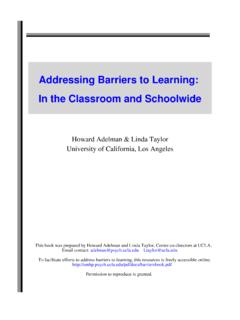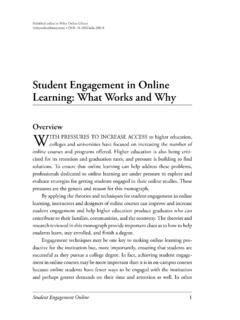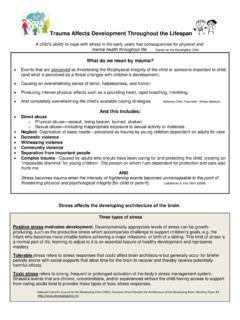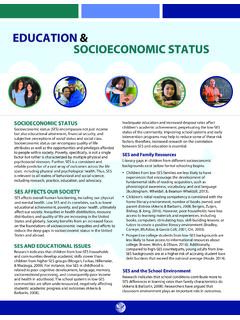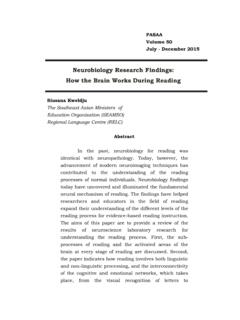Transcription of Student Learning Outcomes - Articulation
1 What is the difference between course objectives and Learning Outcomes ? Much confusion exists about the definition of goals, objectives, and Learning Outcomes . Part of the confusion results from the fact that the terms are often conflated, even in the literature. Our accrediting agencies now require and SF State policy now requires that faculty include Learning Outcomes on all course outlines and in their syllabi, so it s important to understand the differences in these terms. Goal A goal is a broad definition of Student competence. You may remember that we now have six baccalaureate goals. Examples of these goals include: Students will be competent in critical questioning and analysis. Students will have an appreciation of the necessity and difficulty of making ethnical choices. Students will know how to make connections among apparently disparate forms of knowledge.
2 Objective A course objective describes what a faculty member will cover in a course. They are generally less broad that goals and more broad than Student Learning Outcomes . Examples of objectives include: Students will gain an understanding of the historical origins of art history. Student will read and analyze seminal works in 20th Century American literature. Students will study the major regulatory agencies. Student Learning Outcome A detailed description of what a Student must be able to do at the conclusion of a course. When writing Outcomes , it is helpful to use verbs that are measurable or that describe an observable action. Such verbs help faculty (and students) avoid misinterpretation. The best Outcomes will include a description of the conditions ( when given x, you will be able ) and the acceptable performance level.
3 Words Open to Many Interpretations Words Open to Fewer Interpretations To know To write To understand To recite To really understand To identify To appreciate To sort To fully appreciate To solve To grasp the significance of To construct To enjoy To build To believe To compare To have faith in To contract Examples of good Student Learning Outcomes : Government. When given a major decision made by a governmental leader, you will be able to identify the major factors that the leader had to consider and discuss why the action was taken and what apparent trade-offs were made. Economics. Demonstrate graphically and explain how a change in expectations will affect the loanable funds market. Management. Identify (based on readings, case studies, or personal experiences) those activities that are most likely to distinguish effective, well-managed technology development programs from ineffective programs.
4 Statistics. When given two events, you will be able to determine whether they are independent or whether there is a relationship between them (that is, one event affects the probability of the other). On the basis of this determination, you will be able to select and use the appropriate rules of conditional probability to determine the probability that a certain event will occur. Religion. When given a definition of the term religion, students will be able to identify which of the following characteristics is emphasized: feeling, ritual activity, belief, monotheism, the solitary individual, social valuation, illusion, ultimate reality, and value. Music. On hearing musical selections, you will be able to identify those that are examples of chamber music and be able to identify the form, texture, and makeup of the ensemble. Art. When shown a print, students will be able to identify whether it is a woodcut, an etching, or a lithograph, and students will be able to list the characteristics on which this identification was based.
5 Psychology. When given a case study, you will be able to identify whether it describes a case of schizophrenia, and if it does, which of the following schizophrenic reactions are involved: hybephrenic, catatonic, or paranoid. (Examples are taken from Designing and Assessing Courses and Curricula, Third Edition, 2008. Robert M. Diamond. Jossey-Bass: San Francisco, CA.)
